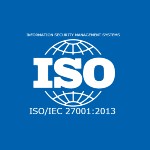The Next Generation of Retail Healthcare
Posted by | Fuld & Company
The healthcare industry is becoming increasingly more retail-oriented, and healthcare providers and payers must anticipate and respond to these market changes to remain successful. The trend goes beyond on-site clinics to include a number of actual and potential healthcare options in diverse retail locations.
It’s easy to envision an extreme scenario in the next 5-10 years, in which discount healthcare providers have set up shop in a variety of retail centers: not just in CVS and Walgreens, but in Kohl’s, Home Depot, Lowe’s, Costco, BJ’s, and major suburban malls. Marriott has added healthcare centers to its Marriott, Courtyard and Residence Inn properties in major cities. The scope of these healthcare centers extends far beyond the basic services of Minute Clinic and includes full check-ups, screening tests, long-term management of chronic diseases, and even minor surgery. A large portion of middle- and working-class individuals and families use these centers for most of their healthcare needs, given their convenient hours and locations, and competitive, transparent pricing.
The shift in healthcare toward a retail model is no mere hypothetical exercise. Beyond the pharmaceutical industry’s direct consumer campaigns and the rise of WebMD and other health information sources:
- Walmart opened six primary care clinics within existing stores in South Carolina and Texas by August 2014, with another six clinics planned by the end of the year. Walmart is marketing these clinics as full-services facilities, offering chronic disease management as well as the acute care services it and others already provide.
- Target is partnering with Kaiser Permanente to offer expanded healthcare clinics in four southern California Target stores; these clinics are staffed with nurse practitioners and extend beyond the basic services Target has already been offering in its clients.
- By 2013, 32.5% of people under 65 with private health insurance were enrolled in high-deductible health plans (HDHPs), including 11% enrolled in consumer-direct health plans (CDHPs). The percentage of Americans with an HDHP of any kind has increased by 13.3% since 2008.
- A “convenience revolution” has taken place, with an explosion in retail healthcare outlets in CVS (Minute Clinics) and Walgreens (Healthcare Clinics). The number of U.S. retail clinics has grown from 200 in 2006 to 1,615 today, according to Merchant Medicine.
- Non-hospital ER urgent care centers, such as Concentra, are emerging all over the U.S. The Urgent Care Association of America, an industry group, estimates there are currently 9,000 urgent care centers nationwide, with 300 new ones opening every year.
Even without the extreme retailization as depicted in the above scenario, the ongoing shift toward retail in the healthcare sector will have a number of more subtle consequences:
- Heightened competition from traditional and non-traditional healthcare players. Aetna, Cigna and other health plans are moving into adjacent spaces, such as health technology, as their traditional revenues and profits are capped through ACA, and non-traditional healthcare players will continue to proliferate.
- Increasing advertising for traditional and non-traditional players through a variety of different channels.
- Proliferation of agents and service agencies to help consumers navigate and choose healthcare providers and health plans. These agents could be individuals or online educational sites fueled by advertising, similar to Edmunds.com or Kelley Blue Book for car buying.
- Increased demand from increasingly better informed consumers for comprehensive, transparent information about both pricing and quality of health services.
What to do? Regardless of what happens, health providers need to consider the following:
- As competition increases, think of your organization the way a retail company would, asking and answering questions about market segmentation, value proposition and customer messaging.
- Consider partnerships with health plans, financial services companies, health agents, entities that will help you reach new customer segments and better serve existing customer groups.
- Consider restructuring offerings and attendant pricing to meet demands for transparency from those with HDHPs and CDHPs, as well as those with traditional insurance plans. This will help providers remain competitive and maintain margins.
- Begin to track (or continue tracking) activities of both traditional competitors and potential new market entrants as part of an organized external intelligence program.
The shift in healthcare to retail is happening, and the industry is unlikely to return to its previous structure. Healthcare companies can’t stop these trends, but they can anticipate and address them to stay relevant and competitive in the new healthcare world.
Tags: BioPharma, Healthcare & Life Sciences, Strategic Planning



















